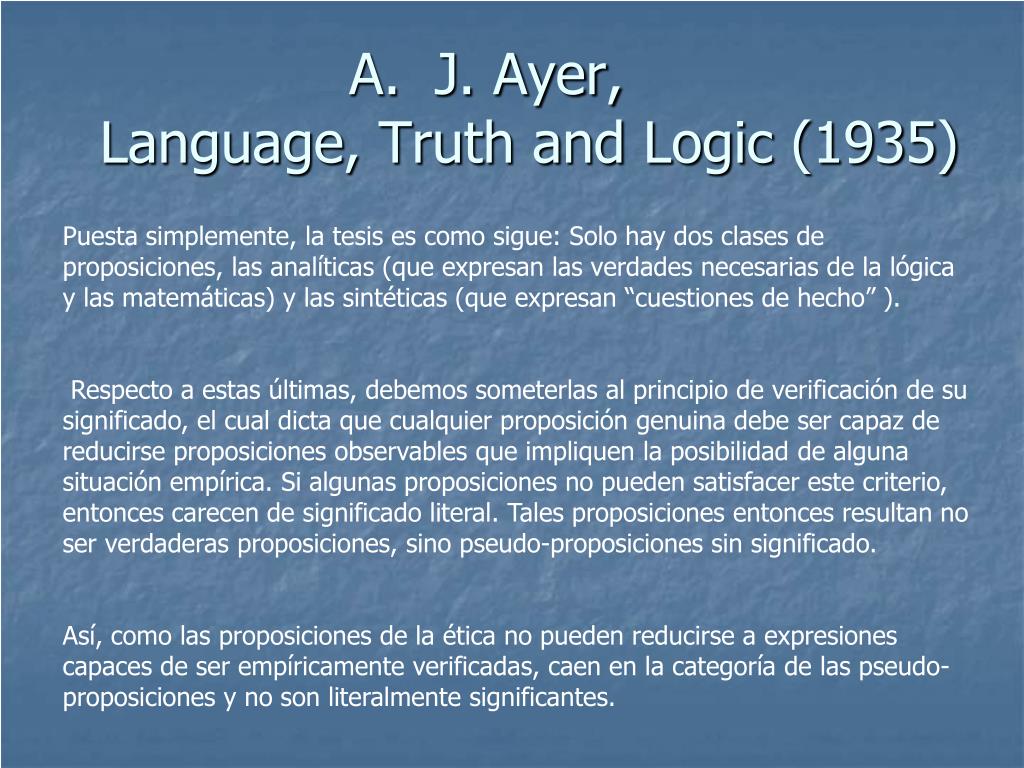
Many historic works, from Aristotle to Locke and Hume, could be viewed as analytic.

the analysis of logical constructions, could be labeled as “analytic,” and Ayer was confident that the same approach had actually permeated the history of philosophy even without such a label. Therefore, the delineation of the usage of language (a logical construction as well) would be paramount in the advancement of philosophy. This fallacy seems to be obvious, but Ayer observed that this laxity of reasoning had attracted numerous philosophers to “imagine” this state of “existence” of nonexistence and to propound metaphysical theories as attempts of justification. For “ X is yellow” entails that X must exist to have the property “yellow,” but “ X is nonexistent” does not lead to that X must exist, in some manner, to have the property “nonexistent.” While “ X is yellow” is a factual statement, “ X is nonexistent” is not. The two sentences, “ X is nonexistent” and “ X is yellow,” appear to have similar linguistic structure, but only in a superficial and misleading manner. As Kant pointed out, existence is not a property. This confusion arises from the unfortunate ambiguity inherent to language: a prime example would be the confusion between “factual” and “linguistic” statement. A widespread fallacy that has plagued great philosophers throughout history is due to the confusion of language usage, the major tool in philosophical analysis.

Alfred Jules Ayer (1910–1989) in this book argued that the work of philosophy is to study logical constructions.


 0 kommentar(er)
0 kommentar(er)
